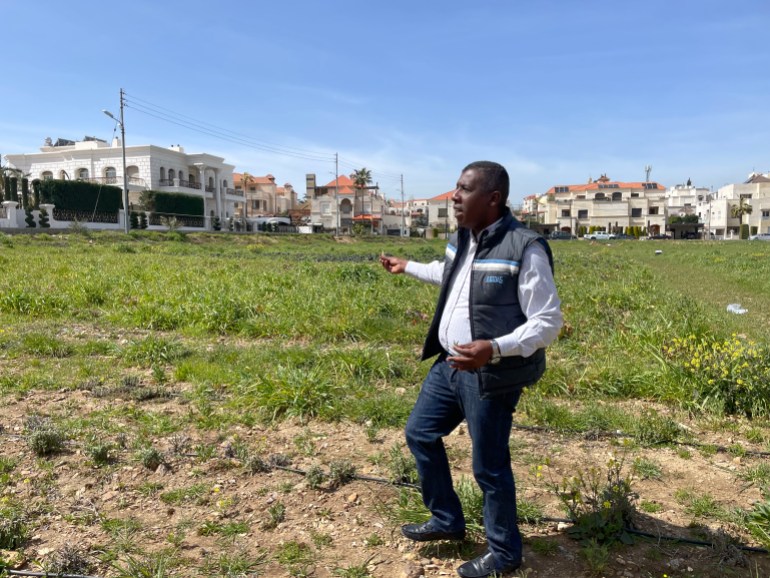Creative solutions needed to fight Jordan’s water scarcity | Climate Crisis
Amman, Jordan – Jordan, a country that is largely desert, is now sensation the results of weather transform.
The second most h2o-scarce region in the entire world, Jordan is susceptible to local weather adjust that has increased as a consequence of inconsistent rainfall, larger temperatures, and an unforeseen populace raise adhering to the Syrian civil war and the accompanying inflow of refugees to the state.
Farmers in Jordan are facing the consequences of drinking water shortage, and are battling to confront them.
Samih Hashim, a farm proprietor in Ghor, north of the funds Amman, is at the front line of dealing with the crisis.
“As a farmer, I evidently see how the inconsistent rainfall and drinking water scarcity affects our generation,” Hashim explained to Al Jazeera. “We’ve had to reuse water and the production of vegetables and fruit has been significantly more compact.”
The agricultural sector in Jordan is specifically vulnerable to weather modify and drinking water shortage 61 percent of cultivated land is fed by rainfall.
Whilst the Jordanian governing administration claims it is doing work to confront the situation, it accepts the vulnerabilities facing Jordan, and specially the agricultural sector.

“Without any question, climate modify has clear consequences and impacts, in particular in distant areas,” the Jordanian Minister of Agriculture, Khaled Hneifat, informed Al Jazeera.
“The Jordanian govt has adopted measures and procedures to assistance the resilience of rural communities and farmers. We do that by supporting farmers, by subsidising products and solutions these kinds of as barley, and developing options for the deficiency of drinking water.”
MENA Weather Week
The challenges dealing with Hashim, and Jordan, are currently being faced across the Middle East and North Africa (MENA).
Temperatures in the area have risen by 1.5 degrees Celsius, according to an analysis of facts from the previous century, marking MENA as the location going through the gravest weather disaster in the planet. According to the International Financial Fund, climate disasters in the area have wounded and displaced 7 million people for every calendar year, and have prompted far more than 2,600 fatalities and an approximated $2bn in physical destruction.
This is the explanation the initial-at any time MENA Climate 7 days took location March 28-31 in Dubai.
The function, hosted by the Emirati government and organised by the United Nations and the Entire world Bank, aimed to function as a system for the region’s governments and civil society to talk about prospects for improving local weather improve.
“In Jordan, we require a reasonable share of assist, specially when it comes to water scarcity, and regional collaboration in get to get the help that we require,” reported Omar Shoshan, the chairman of the Jordan Environmental Union, who attended the conference.
“I see the week only as an chance for the MENA area to concentrate additional on our problems and possibilities for collaboration – but it has been really useful and a fantastic chance to start off the dialogue,” Shoshan included.
Consequences on refugees
In Jordan, the results of local climate alter are impacting the most vulnerable, in individual refugee communities.
“The fragile communities spend the cost,” mentioned Shoshan. “ An illustration is the Azraq space, where by the 2nd-greatest refugee camp in Jordan is positioned. The space is incredibly dry, and this affects the refugees dwelling in the camp, as the h2o top quality is quite undesirable.”
Jordan hosts much more than 750,000 refugees, the next-maximum host nation of refugees per capita in the planet, in accordance to the United Nations Higher Commissioner for Refugees (UNHCR). About 18 percent of refugees in Jordan stay in refugee camps.
“Due to the lack of h2o, the volume [of water] is controlled to an regular of 35 litres per human being for each day,” reported Lilly Carlisle, the spokesperson at UNHCR Jordan. “Most h2o arrives from drilling holes inside the camps, but some has to be trucked in.”
UNHCR is dependable for the Syrian refugee camps in Za’atari and Azraq, which completely host close to 118,000 refugees. Individuals significant numbers have taken a toll on Jordan’s infrastructure, but Carlisle claimed she has noticed the refugees doing the job difficult to beat the effects of local climate change.
“The resilience is exceptional we see them innovating and making new remedies for conserving drinking water,” Carlisle claimed. “Some folks have developed allotments to develop fruit and veggies utilizing hydroponics, as very well as methods on how to recycle h2o.”
Those modern alternatives are also made use of again on Hashim’s farm in Ghor with no them, his farm may perhaps be in an even extra difficult position.
“I am accomplishing my very best by making inventive answers, such as reusing drinking water from my household for watering the fields,” he reported.
“I strongly think in selling area food, and also bringing the farmers closer to the customer, so that individuals can understand and see how we develop fruit and veggies. This is important … so that we can satisfy the troubles triggered by climate improve.”







